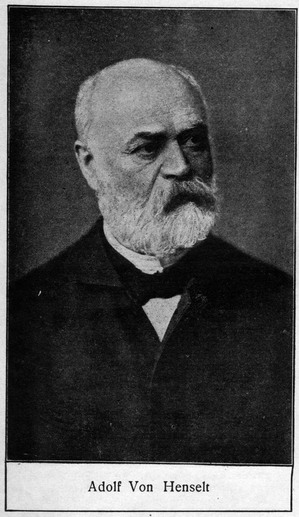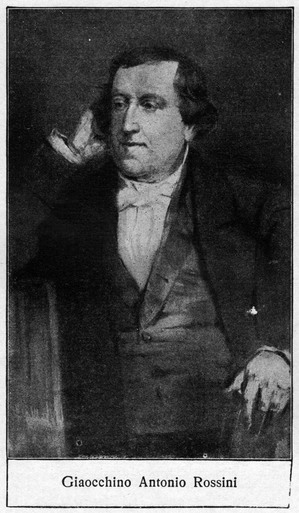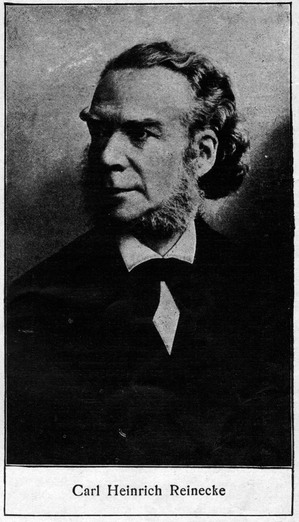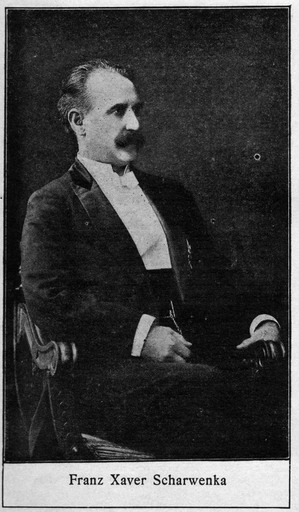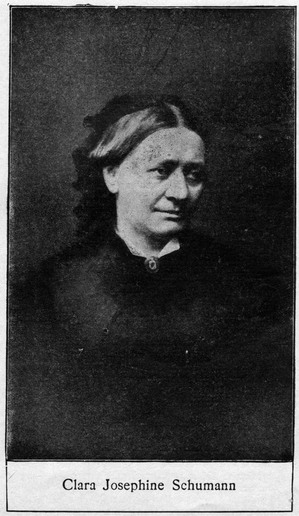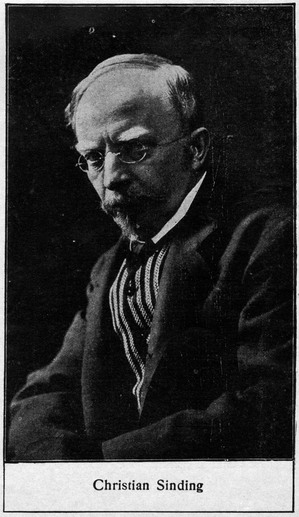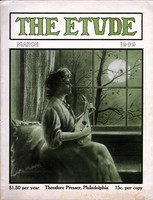THE AIM OF THIS BIOGRAPHICAL PORTRAIT GALLERY
This page is designed to furnish the teacher, student and music lover with portraits and concise biographies of musical celebrities of the past and present. The lives of the great composers, pianists, singers, conductors, violinists and organists will thus be brought to you each month in a very interesting, concise and authoritative form. Used in the manner suggested it should prove a great educational aid. Through this the subscriber will receive seventy-two portrait biographies during the year. It would be impossible to secure this material through any other means, except by the purchase of numerous books at great expense. To students and teachers who have not extensive library facilities it will prove indispensable. One reader suggests pasting them in an indexed scrap book to faciliate (sic) reference. Another states that she has pasted them on short paper stubs and intends binding them with morocco. We welcome suggestions from all of our readers.
(Hen'selt)
Henselt was born at Schwarbach, Bavaria, May 12, 1814, and died at Warrnbrunn, October 10, 1889. He early went to Munich, where he studied pianoforte and harmony under Fladt. His talent as a musician attracted the attention of King Ludwig I of Bavaria, through whose munificence he was enabled to study under Hummel, and later to spend two years at Vienna, where he studied theory under Sechter. In 1836 he was obliged to go to Carlsbad, owing to ill health brought on by overwork, but the following year he was able to tour Germany. His concerts were a great success. In 1838 he married, at Breslau, and later proceeded to St. Petersburg. Here he attracted attention in Imperial circles, and was offered a lucrative position as instructor in the schools for girls. He received the Order of Vladimir. He was also appointed chamber virtuoso to the Empress, and instructor to the princes. His playing was characterized by remarkably poetical insight. His treatment of chord-playing is said to have been superb; in this he was aided by a peculiar hand formation which enabled him to give an almost orchestral effect to his playing. The most famous of his compositions is the F minor Concerto. He also wrote much chamber music, and some technical studies. Henselt was held in very high esteem by his musical contemporaries.
(Ros-see'nee)
Rossini was born at Pesaro, Italy, February 29, 1792, and died in Paris, November 13, 1868. His father was a horn player, and his mother a singer, so that he was brought up in a musical atmosphere. At the age of four his parents were obliged to leave him in Bologna during their travels in search of a living. Here it was that Rossini studied. His first opera was produced in Venice, in 1810, but the first real great success followed three years later, when Tancredi was produced in the same city. After this the Italians began to realize they had a genius among them. His next great success was Il Barbiere di Siviglio, produced at Rome in 1816. Its first performance was a dismal failure, but its second performance was a dazzling success. In 1823 he went to London, where he made $50,000 in five months. Foggy London, however, did not please the sun-loving Italian, and Rossini departed for Paris. Here he undertook to manage an opera house, but met with a failure which in no wise disturbed him.
His last opera, William Tell, was also his greatest. He wrote no more during the remainder of his years, except Stabat Mater, in 1832. He returned to Italy in 1836, but seven years later he was back in Paris, where he remained, delighting the exacting Parisians with his whimsical humor and satirical comments until he died.
(Ry'nek-ke)
Reinecke was born June 23, 1824, at Altona, and was taught chiefly by his father at home. In 1843 he toured North Germany, Norway and Sweden. Leipsic was his home for a while, but further concert tours followed, and in 1846 he was made Court Pianist to King Christian VIII of Denmark. In 1851 he became a teacher at Cologne, but moved in 1854 to Breslau, where he directed the Singakademie. In i860 he went to Leipsic, becoming director of the Gewandhaus concerts—a position relinquished only in recent years to Arthur Nikisch. He was at the same time made professor of pianoforte playing and composition at the Leipsic Conservatoire. In 1897 he became head of that institution, retiring in 1902. In spite of his devotion to teaching, he found time to make concert tours throughout Europe which have always been successful, and he is the composer of over 200 compositions. Reinecke belongs to an older generation, and had little sympathy for Wagner and Liszt, and the hot-blooded romantic composers of their day. He inclines more towards Mozart and Mendelssohn, and has not unfrequently been severely criticised for his conservatism. But he is, none the less, a great teacher, and his pupils have been such men as Chadwick and Joseffy of America, Sullivan of England, Max Bruch of Germany, and Svendsen of Norway.
(Shar-ven'ka)
Xaver Scharwenka was born January 6, 1850, at Samter, Polish Prussia. From there his father moved to Posen, where he first took up the study of music, though it was not till 1865, when his father moved to Berlin, that Scharwenka decided to adopt music as a profession. Here he studied under Kullak to such good purpose that in three years he was appointed teacher under Kullak. In 1874 he resigned to tour Germany, giving recitals, which were extremely successful. In 1881 he returned to Berlin and was appointed pianist to the Prussian Court, and in the same year founded the Scharwenka Conservatory, which was later associated with that of Klindworth. It was at this time he composed his B flat minor concerto, which was much admired by Liszt. In 1891 he came to New York, where he founded the Scharwenka Conservatory, but after seven years returned to Berlin, where he received the title of Ritter, was made a Doctor of Music, Royal Professor and Senator of the Prussian Academy of Fine Arts.
He has written a considerable amount of music, including an opera entitled "Mataswintha," and has been very successful in the smaller forms. His Polish dances are familiar to most pianists. Scharwenka's pianoforte technic is remarkable for brilliance of tone and clearness.
(Shoo'-mahn)
The subject of this sketch was the daughter of Friedrich Wieck, and was born in Leipsic. September 13, 1819, and died at Frankfort, May 20, 1896. She studied under her father, and it was not long before her ability manifested itself. In 1828 Clara Wieck (Veek) made her first appearance in public at a Gewandhaus Concert, playing the F minor Concerto of Chopin. Her astonishing skill and interpretative insight won her many distinguished friends, among them being the aged Goethe, whom she met at Weimar. She then toured Europe, and achieved enormous success, especially in Paris, where her genius won her such friends as Mendelssohn, Meyerbeer, Chopin and Kalkbrenner. In 1837 she was made Imperial Pianiste, and excited the admiring envy of Liszt, not yet come to his own. In 1840 she married Robert Schumann, in spite of active opposition on the part of her father. The happiness of their union and the devotion she showed to her husband make one of the most beautiful romances in the history of music. Schumann's nervous breakdown at Dusseldorf, and subsequent insanity, which culminated in his death, seemed only to increase her devotion to him. After his death Clara Schumann resumed her concert career until 1878, when she became a teacher of piano at Dr. Hoch's Conservatory, Frankfort. It is impossible to estimate the value of the work she did in popularizing Schumann's music.
(Sin'ding)
Sinding was born at Kongberg, Norway, January 11, 1856, and when quite young evinced a talent for composition. After studying for a while in Christiania, in 1874 he placed himself under the stern rule of The Leipsic Conservatory. Carl Reinecke was his teacher, as he was of Sinding's distinguished fellow-countryman, Edward Grieg. Sinding was also greatly assisted by Adolf Brodsky, to whom later he dedicated his violin concerto, Op. 45. While at Leipsic Sinding won a royal scholarship by which he was enabled to proceed to Dresden, to the Hochschule in Munich and to Berlin. Upon his return home he settled in Christiania, where he took a position as organist and devoted himself to teaching, working at composition in his spare time. Since then he has continued as he began, making occasional tours through Europe. In 1890 he moved to Copenhagen. While younger than Grieg by thirteen years, he is considered by some to be a finer composer, though probably not by the majority of musicians. His music, however, exhibits marked individuality. Perhaps his most widely known composition is the beautiful "Fruhlingsrauschen"—"Voices of Spring"—though his symphony in D minor, first produced in 1890, was what first attracted general attention to him.


